When we’re coming up with new ideas for a project, it’s common for our minds to become crowded with information, and this can sometimes get overwhelming and make it hard to get our points across in our finished project. One way to simplify the process of brainstorming is to use a mind map. This allows us to jot down our ideas as and when we get them, so they’re visualized for us to look back on when we’re building projects. Let’s take a closer look at what a mind map is, and what it’s used for, and give some cute, creative mind map ideas from Prezi that might come in handy for your next project.
What is a mind map, exactly?
A mind map comes in handy for many things. Whether it’s brainstorming, planning for a project, or revising for a test. The main structure of a mind map is to start with a central idea, with subtopics that branch out from the main idea. As you gather more information, you can add it to the mind map quickly so you don’t lose your train of thought. Let’s look more closely at the elements of a mind map.
Central idea
At the heart of every mind map is the central idea. This main topic or concept sits at the center of your diagram. From here, all other ideas and themes will branch out. The central mind map idea acts as the anchor, guiding the direction of your thoughts and the overall structure of the mind map.

Branches
Branches grow outward from the central idea, each representing a main theme or category related to your topic. These lines link the central idea to various subtopics, illustrating how different pieces of information are connected. As more branches are added, the structure begins to look like a tree, which helps to visually organize and categorize the information.
Keywords
Keywords are placed along the branches and are crucial for keeping your mind map concise. These are typically single words or short phrases that capture the essence of the subtopics. Keywords help you quickly recall detailed information and keep the mind map focused and clear.
Sub-branches
Sub-branches stem from the main branches and break down the information into more specific topics. This allows for a deeper exploration of each theme. By dividing complex information into smaller, manageable parts, sub-branches make it easier to study and understand your subject matter.
Colors and images
Using colors and images for your mind map ideas can boost its effectiveness. Colors can differentiate between categories, helping to keep the mind map organized and visually engaging. Images and symbols can represent ideas, acting as visual cues that enhance memory and recall.
Uses of mind maps
Mind maps are a great way to organize your thoughts. Here are some common ways to use them and why they work so well.
Brainstorming
If you’re a student or educator, brainstorming might be something you do regularly. Whether you need to write a big paper, work on a group project, or take part in class discussions, mind maps are a great way to note down your thoughts.
The best way to brainstorm is to start with your main idea in the center, and then branch out with your thoughts as they come to mind. For example, you might create branches for supporting details or examples that back up your main points.
For group projects, you could use a mind map to divide tasks and assign responsibilities. Topics could be color-coded for each participant, so it’s clear who is doing which parts of the project. Mind maps are also a great tool for tracking progress, as you can always look back at them and check off sections as they’re completed.
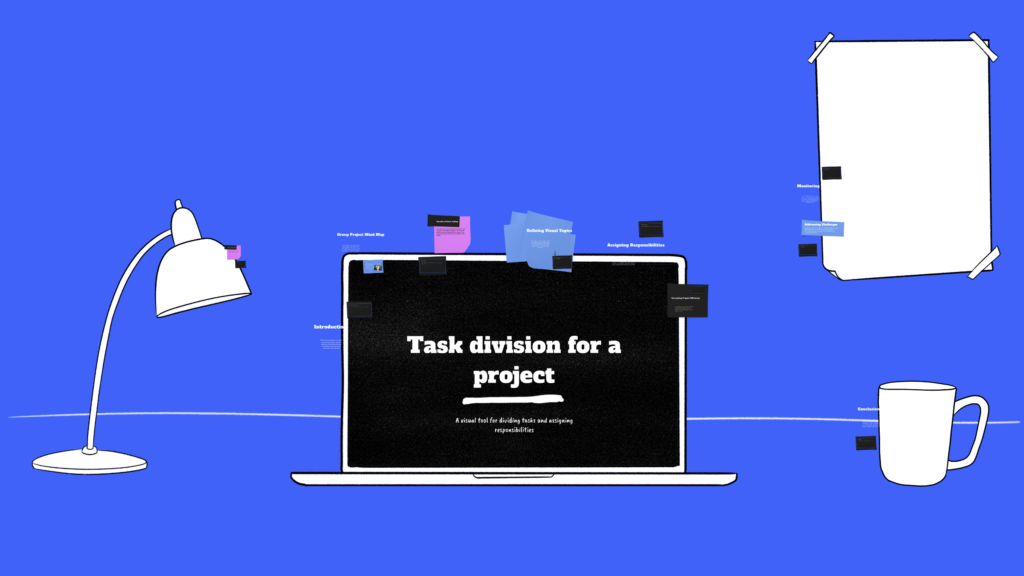
Lastly, mind maps are great for classroom brainstorming. A teacher might give the main idea or topic, which then provokes students to come up with thoughts, opinions, or ideas related to the subject. As each student gives their thoughts, it can be added to the map, showing how each opinion intertwines and connects to the main idea.
Note-taking
The great thing about choosing a mind map to take notes is that it structures the information in a way that’s easy to read and remember. With traditional note-taking, it can be hard to find key bits of information when looking back through your notes. But, with a mind map, all the information is visible and separated into sections so it’s easier to digest and revise.

In a lecture, you could put the main topic in the center, and as the lecture goes on, you could draw branches for each key point the professor talks about. You could then add smaller branches for details and examples. This forms a visual representation of the lecture that you can always refer back to.
For example, if you’re in a history class, put the main event in the center. Then, branch out with key events, important figures, dates, and outcomes. This helps you see the big picture and understand how everything fits together.
When it’s time to review your notes, a mind map makes it easy to see the main ideas and how they connect. This is really helpful for studying and writing papers. Using colors and images can also make your notes more engaging and easier to remember.
Mind maps also encourage you to interact with the material as you organize it, which can improve your understanding and memory. This method can make your study time more effective and enjoyable.
Problem-solving
Mind maps might come in handy for breaking down issues into smaller, more manageable parts. You could start by placing the main problem in the center of your page. From there, you can create branches that explore the possible causes, effects, and solutions.
Dealing with a group project that isn’t going smoothly? Write the main problem in the center. Then, branch out into different areas like communication issues, task distribution, and time management. Each of these branches can be further broken down into more specific details, such as missed deadlines or unclear instructions.
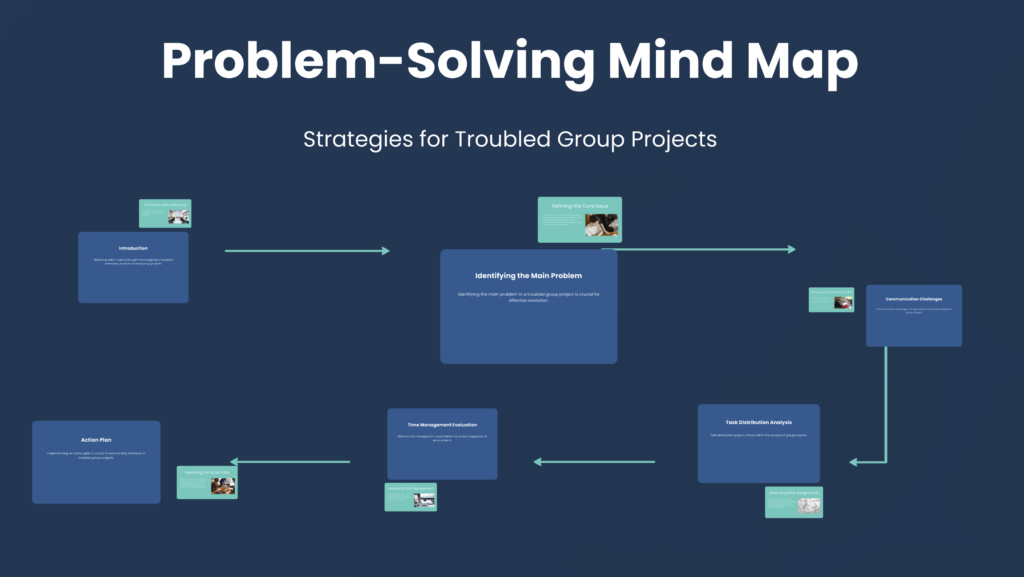
Seeing everything laid out in a mind map helps you understand how different factors are connected. It also makes it easier to think through various scenarios and consider different angles you might have missed with a traditional list.
Mind maps are also great for brainstorming solutions. As you add potential fixes, you can quickly see which ones might work best and how they relate to the causes and effects you’ve identified. This visual and flexible method is a handy tool for tackling tough issues.
Planning
Mind maps are great tools for planning projects, events, or daily tasks. Start with your main goal in the center. From there, create branches for each task you need to complete. Add sub-branches for deadlines and the resources you’ll need.
For example, if you’re planning a school project, put the project name in the center. Branch out with tasks like research, writing, and creating a presentation. Under each task, note the deadlines and any materials you need.
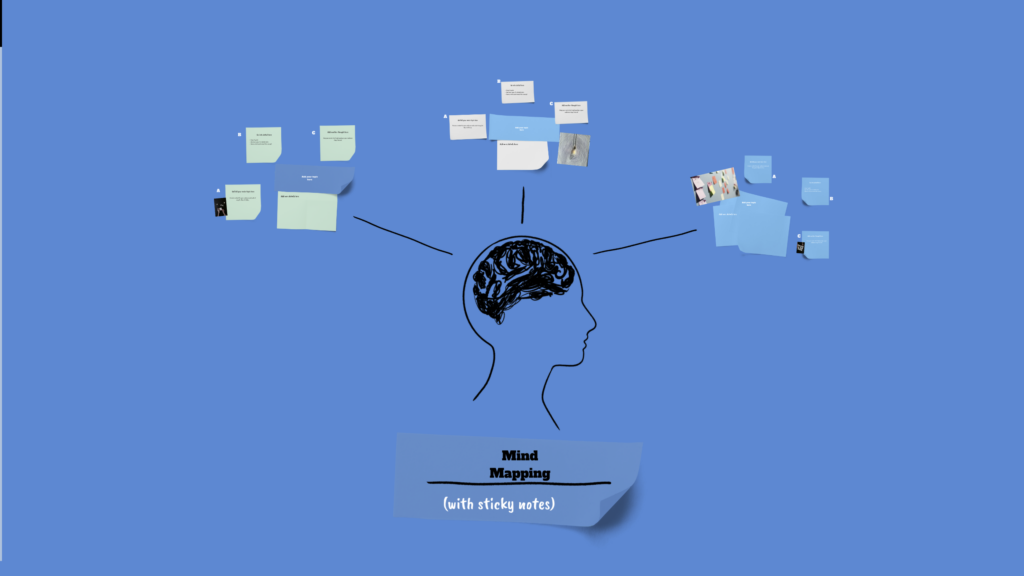
Mind maps are great for personal planning too. For example, if you need to plan for an upcoming birthday party, you can branch off with important points like venue, guest list, decorations, food, etc. Under each branch, add sub-branches with specific details. For example, under ‘food’ you include ideas for types of food. Visual mapping like this helps you see all the details at a glance and ensures you don’t forget anything
Studying
Mind maps can make the process of studying a lot easier by organizing information in a clear way. Whether you’re in school, college, or just studying to learn something new, mind maps are a great way to condense chapters from a textbook, review your class notes, or even outline key concepts for exams.
For example, if you’re studying a chapter of a book, you could make the center of your mind map the title of the chapter. You could then branch off with all the key points from the chapter, including characters, events, and timelines. By using mind maps in this way, you can refresh your memory without having to re-read whole chapters. This would come in handy as a last minute review before an exam too.
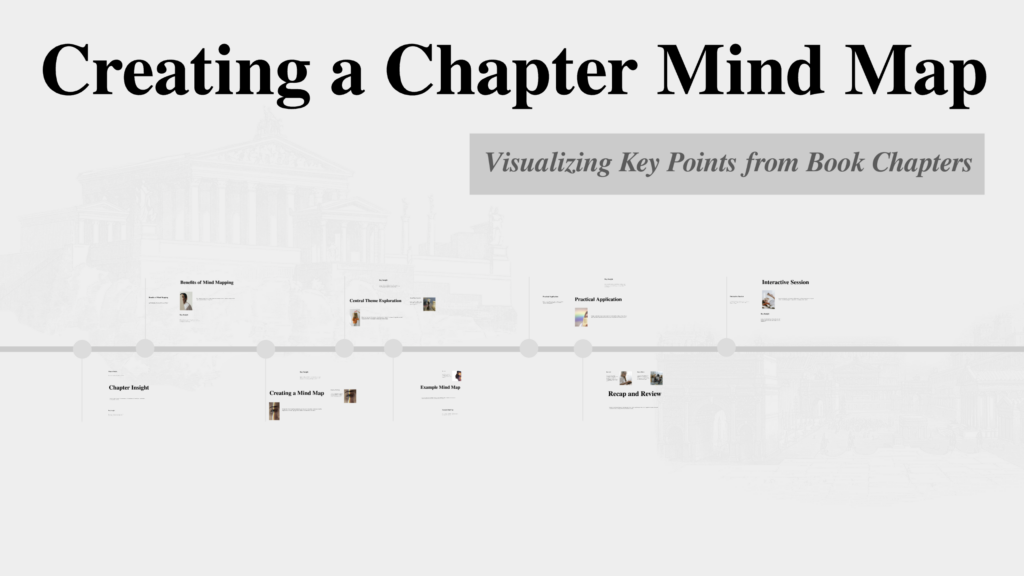
When you come up with mind map ideas it also helps you to remember what you’ve learned because as you’re arranging the information, your mind will actively process it, which aids in better retention of what you’re studying.
Sharing ideas and information
Mind maps are handy for more than just personal use. They can be used to share ideas clearly in many different environments.
Teachers can use mind maps to help students see how different concepts are connected. In the workplace, mind maps can be useful in meetings. They help present ideas in a clear and interactive way. Instead of listing points one after another, a mind map shows the main idea and related points at once. This makes it easier for team members to follow the discussion.
When presenting, mind maps can illustrate your thought process. Tools like Prezi allow you to create presentations that zoom in and out of different parts of the mind map, keeping the audience engaged. For example, if outlining a project plan, start with the project name in the center and branch out to tasks, timelines, and resources.
Using mind maps in presentations helps everyone see the big picture and understand how different ideas connect. This makes information easier to understand and remember.
By incorporating mind maps into teaching or work presentations, you can make your ideas clearer and your sessions more interactive. This method helps students, colleagues, and team members grasp and retain information better, making your presentations and meetings more effective.
Prezi: a platform for turning your mind map ideas into a presentation
Prezi is a platform where you can create presentations that are different from traditional slide shows. With Prezi, you can zoom in and out of a large canvas to show how different points connect to form the bigger picture, perfect for mind mapping.
A useful feature of Prezi is its large selection of templates. These templates are perfect for formatting mind maps and turning them into presentations. Prezi also has a vast catalog of examples, where you can access other Prezi presentations that have been created by real users. This is a great way to seek inspiration for turning your mind map ideas into an engaging presentation. Also, you can reuse the presentations created by other users so you don’t have to start from a blank page.
Whether you’re a student, teacher, or working professional, Prezi is a place where you can easily organize your mind map ideas and share them in a way that’s visually appealing.
Mind map ideas for students and professionals
To showcase how useful Prezi can be for your mind map ideas, here are some presentation templates that would serve as great foundations for your mind map.
Science – Cranium (AI Assisted)
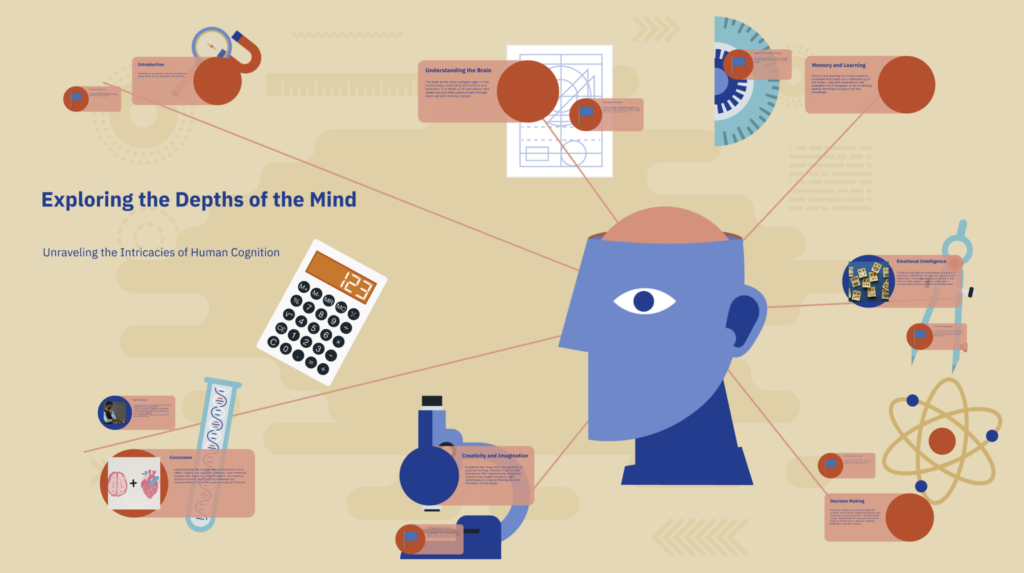
This template begins with a title slide, which would be a good place to put your main mind map idea. This shows your audience what the main topic is and gives them an idea of what the rest of the presentation might entail. As the template moves from point to point, it gives prompts as to what information you should add. For example, the second frame says “Introduce your first point” and so on. This is an easy way to move your mind map ideas from paper to presentation format.
Whiteboard (AI Assisted)
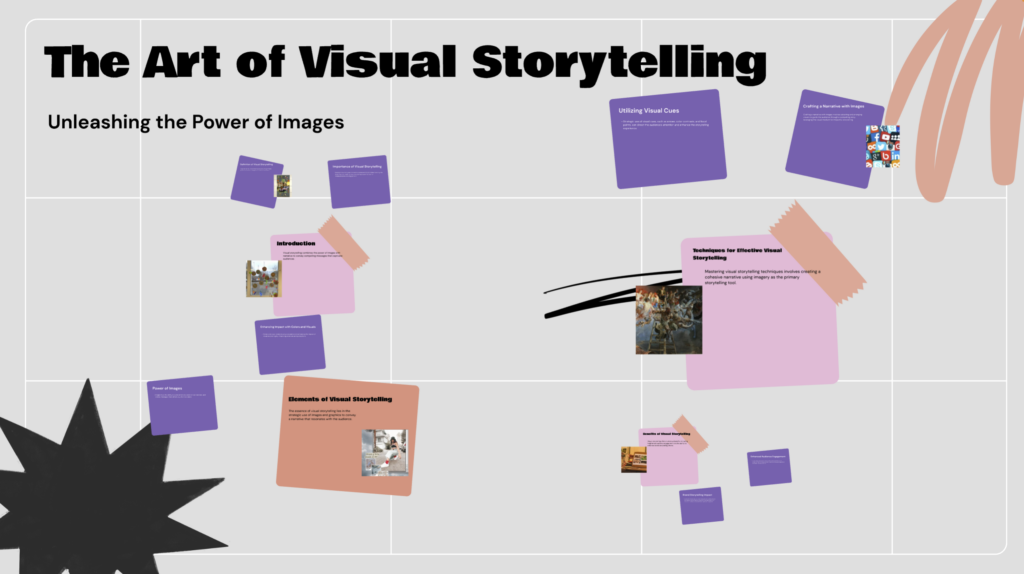
Similarly to the previous template, this template also gives you prompts throughout so you know where to add each section of information. What’s really useful though, is that it also provides tips for each frame, such as when to keep your words short and punchy to keep the audience engaged. This template would be great for users who lack experience in presentation making, as it essentially gives a step-by-step guide for inputting mind map ideas.
Sales Plan Presentation Template
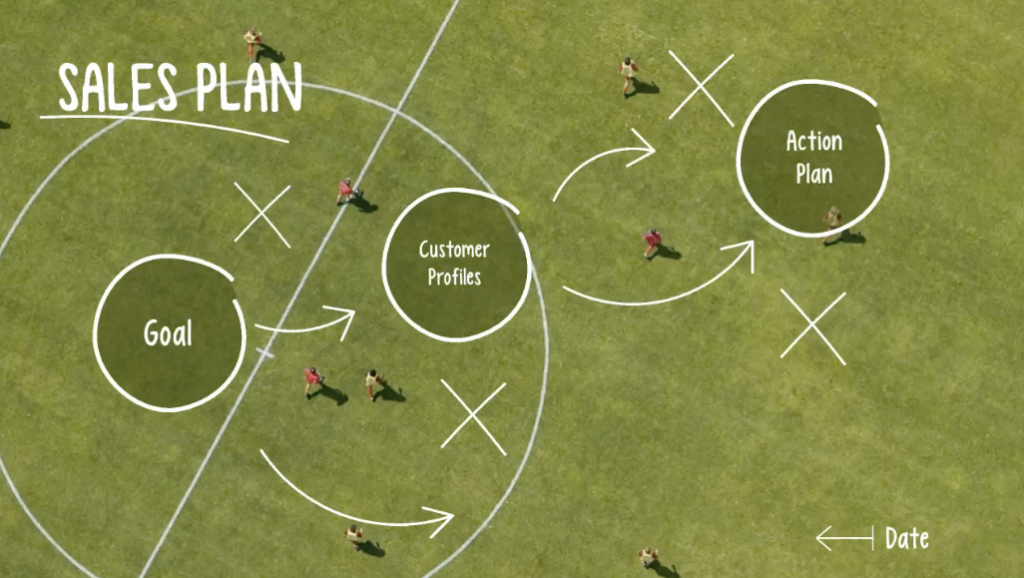
Ideal for businesses, this template effectively transitions from one point to the next with the aim of explaining how a main goal is going to be met. The main goal would be your main mind map idea, and as the presentation flows from one point to the next, you would input the ideas from each branch of your mind map.
Constellations (AI Assisted)
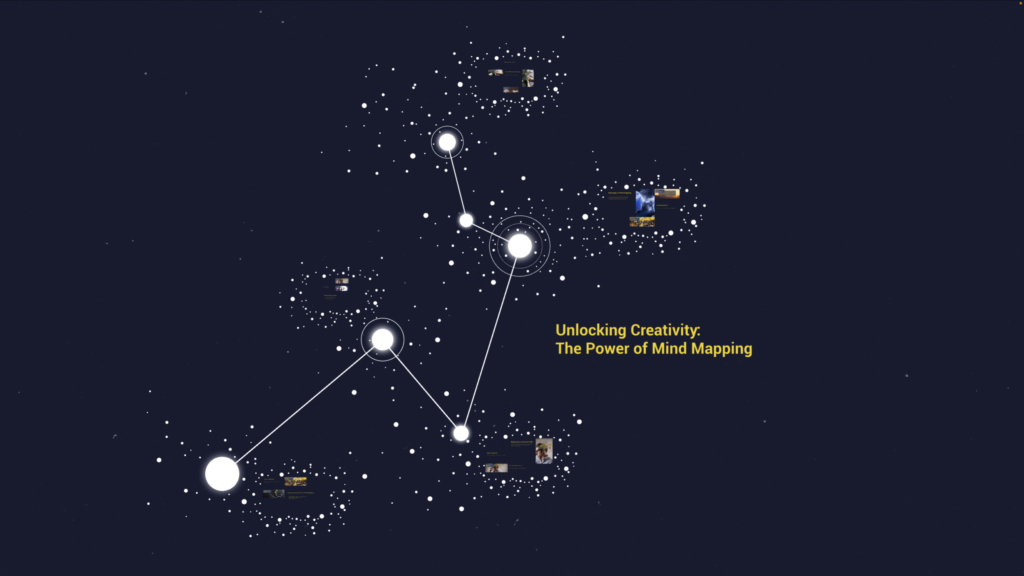
This pre-set constellation template in Prezi is a great choice for showcasing mind map ideas. It’s set out in a way where a central idea connects with various subtopics, hence the constellation theme. You can start with your main idea in the center and branch out to related points, just like a mind map. This makes it easy for your audience to follow your thought process and see the connections between different ideas.
Personal Story (AI Assisted)

This Prezi template would be good for both students and businesses. It’s designed in a way that tells a story by moving through a visual journey. For students, you could use this template to talk about yourself personally and your academic journey and ideas. For businesses, you could use this template as a sales pitch, showcasing your business ideas and what you stand for. All you’d have to do is take your mind map ideas and input them into the relevant sections in the template.
These Prezi templates show just how immersive and interesting your mind map ideas can be when you transform them into a presentation. Not only does having a pre-set template make the process easy for you, but it makes sharing your thoughts and ideas more exciting and engaging for everyone involved.
Mind map ideas: Inspiration from Prezi
If you’re still unsure about how to turn your mind map ideas into an effective presentation, here are a few Prezi examples to get your creative juices flowing.
How to be more productive and focus
This Prezi by Nir Eyal shares information and tips on how to be more productive throughout the day. Just like a mind map, the Prezi is split into sections that each offer a main idea. The user has taken full advantage of Prezi canvas by zooming in on each key point and then zooming even further to give the viewer more details. This is similar to mind mapping, where you create branches and sub-branches.
Understanding the teenage brain
This Prezi is a great example of sharing mind map ideas. The first frame features the title (main idea) along with five subcategories. Making the subcategories visible from the start is a good way to show the audience which topics will be covered. The Prezi then continues in an immersive way by zooming in on each topic and giving more details. Creating a presentation this way can simply take your mind map ideas and input them section by section to create an interconnecting story.
From mind map to visual story with Prezi
As we’ve seen in the previous examples, using Prezi for sharing mind map ideas turns your thoughts into a reality where everyone can visualize your thought process. Here’s what makes Prezi so dynamic and engaging.
Open canvas
Prezi open canvas is designed in a way that takes viewers on a journey through your thought process. Unlike traditional slide shows, Prezi lets you move freely across a large canvas, zooming in and out of different sections. This way, you can start with your central idea and gradually reveal the related points, much like a mind map.
As your audience follows along, it’s like they’re looking into how you think, seeing the connections and flow of your mind map ideas. This interactive and visual approach makes complex information easier to understand and more engaging. Prezi’s open canvas turns your presentation into a story, guiding viewers through your concepts in a natural and memorable way.
A seamless creation process with Prezi AI
Prezi AI can assist you in creating a presentation inspired by your mind map ideas. All you need to do is prompt the AI by describing your topic, and it will offer suggestions on the design, theme, and layout of your presentation. This not only saves time but also ensures that your presentation is designed to a high standard with minimal effort. Prezi AI also has another valuable feature – text editing. Let’s look at how Prezi AI could assist with your mind map ideas.
Color scheme recommendations
Prezi AI helps by suggesting color schemes that make your presentation visually appealing and easy to follow. Good color choices can highlight important points and keep your audience engaged. Prezi AI selects colors that work well together and makes your presentation clear and attractive, helping viewers easily distinguish between main ideas and subtopics.
Design and layout options
Prezi AI gives you plenty of design and layout options to fit your content. Whether you’re presenting a straightforward mind map idea or a detailed project, Prezi AI recommends the best layout to organize your information. These templates help make your presentation clear and engaging, making it easier for your audience to follow and understand your points.
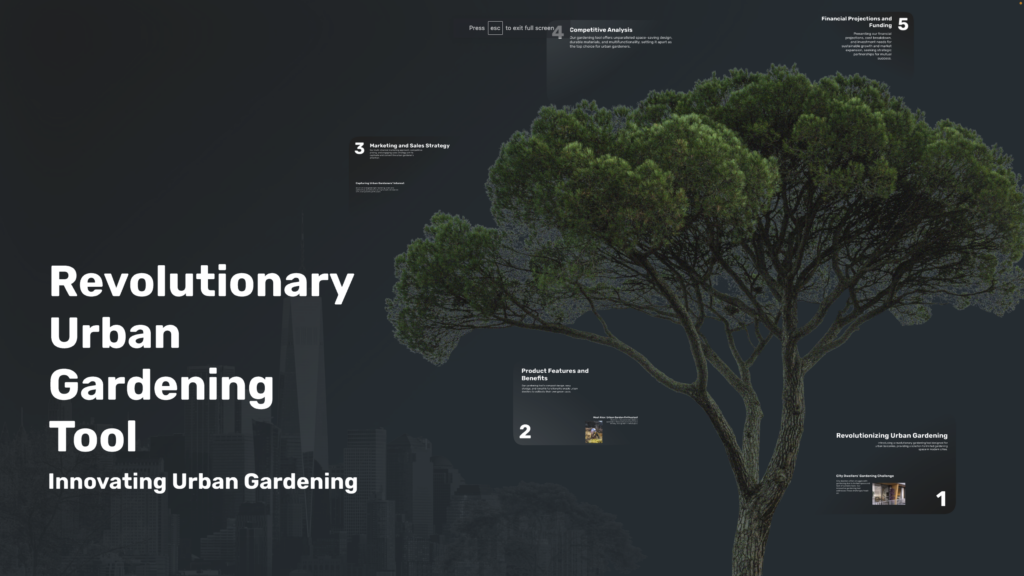
Automated assembly
When you describe your topic, Prezi AI helps build your presentation. It arranges your mind map ideas logically, saving you time. This feature ensures your presentation flows smoothly, with each part clearly connected to the main idea, making it easier for your audience to understand the overall concept.
Text-editing features
Prezi AI includes tools to help you edit your text, making it clearer and more effective. You can easily adjust the wording, font size, and style to match your presentation’s tone. Prezi AI also offers suggestions to improve clarity and readability, ensuring your text supports your visuals well. These features help you fine-tune your presentation, making sure it effectively communicates your mind map ideas.
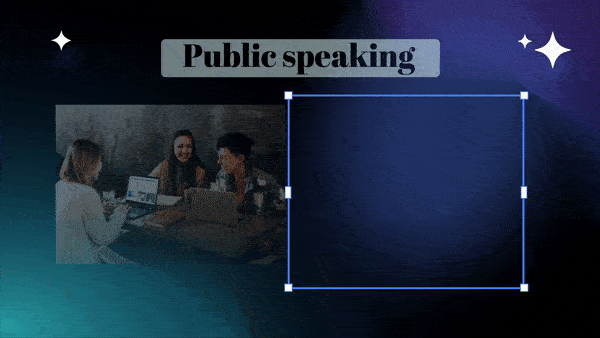
The benefits of using Prezi to create a mind map presentation
Using Prezi to convey your mind map ideas offers several advantages over traditional mind maps. Here are some key benefits:
#1 Dynamic and engaging visuals
Unlike static mind maps, the Prezi canvas allows you to zoom in and out of different areas, highlighting key points and showing how they connect. This keeps your audience interested and helps them follow your thought process.
#2 Easy to follow
With Prezi, your presentation flows smoothly from one point to the next. The clear layout and movement between topics make it easier for your audience to understand and retain information. This is especially helpful for complex subjects where seeing the connections between mind map ideas is crucial.
#3 Professional templates
Using one of Prezi’s pre-designed templates means you’ll get a polished, professional-looking presentation without having to put any work into the design elements. They’re great for showcasing mind map ideas because they often come with prompts telling you where to put main points, sub-topics, and examples.

#4 Interactive presentations
You can create a more engaging experience for your audience with Prezi interactive features. Adding multimedia elements like videos, images, and links makes your presentation both interactive and informative. This approach can make your mind map more memorable and impactful.
#5 Time saving tools
Prezi AI can help you quickly assemble your presentation. This means that you can spend more time thinking about your mind map ideas, and less time worrying about colors, layout, and formatting each slide.
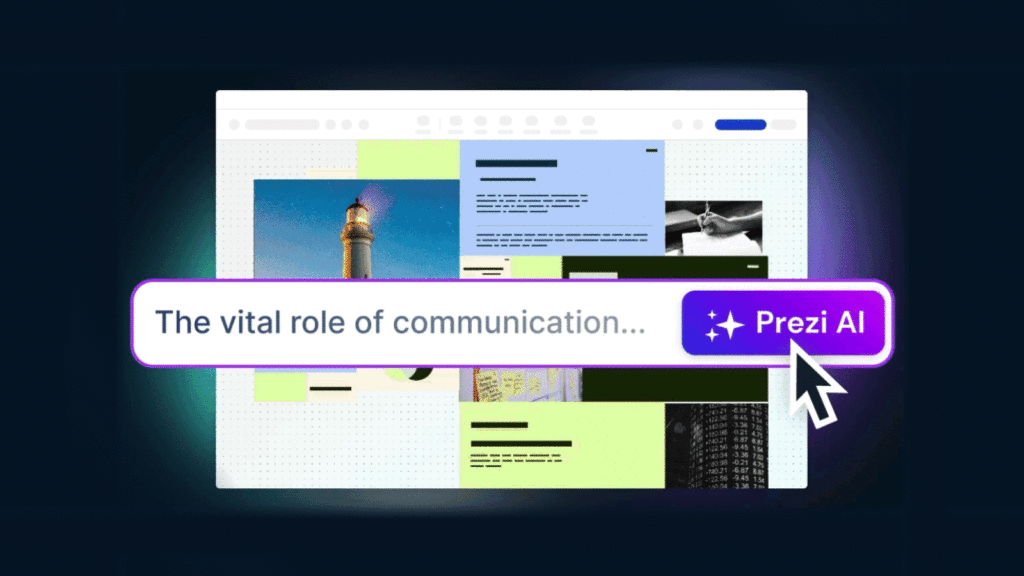
#6 Adaptability
Prezi makes it simple to update and adapt your presentation. You can make changes or add new mind map ideas without redoing the whole thing. This flexibility is especially helpful for ongoing projects or topics that change over time.
#7 Easy collaboration
Prezi simplifies collaboration because it allows multiple users to work on the same presentation in real-time. This is perfect for group projects or team meetings. With this feature, everyone can contribute their mind map ideas, ensuring the final presentation reflects the entire team’s effort. If you’d like to access this feature, explore options to upgrade to a Prezi Business plan.
Prezi vs. traditional mind maps
While traditional mind maps are great for structuring your ideas, Prezi does offer several other advantages. Here are some of them:
- Interactivity: Traditional mind maps are static, while Prezi presentations can include multimedia elements, making them more engaging.
- Ease of use: Prezi’s templates and AI tools make it easy to create presentations, saving you time and effort.
- Professional appearance: Prezi ensures that your mind map looks clean and professional, which can be challenging with hand-drawn or simple digital maps.
- Adaptability: Updating your presentation in Prezi is easy. You can make changes without redoing the entire mind map, providing more flexibility.
Overall, Prezi offers an effective way to organize, present, and share your ideas. Its dynamic features make it a great choice for both educational and professional projects. Prezi’s interactive and visually engaging format ensures your mind maps are not only clear but also more impactful, helping your audience better understand and retain information. By allowing real-time collaboration, easy updates, and a polished appearance, Prezi stands out as a superior tool for creating mind map presentations.
Final thoughts on the best way to create your mind maps
Mind maps simplify brainstorming and organizing ideas. While traditional mind maps work well, Prezi offers extra benefits that can enhance your idea organization. Prezi’s dynamic visuals, clear layouts, and interactive features make sharing mind maps easier.
Prezi lets you update and adapt presentations quickly, collaborate with others in real-time, and use ready-made templates to save time. This makes it a great tool for students, teachers, and professionals.
Whether you’re tackling a group project, planning an event, or preparing a lecture, Prezi helps you present mind map ideas clearly. It turns your thoughts into an interactive story that grabs your audience’s attention and aids understanding. Try it out for yourself!
